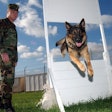High-fat or high-carbohydrate diets (high-fat: 30% fat, 18.9% carbohydrate; high-carbohydrate: 10% fat, 46.3% carbohydrate) and lengths of adaptation were investigated in cats (Felis catus; 10 ± two months, 3.6 ± 0.3 kg).
Cats randomly received each treatment for 14 days in a crossover design with a 14-day washout period between each diet. Three 22-hour indirect calorimetry studies were conducted after acute (day 0), semichronic (day 4) and chronic (day 13) dietary exposure. Blood samples were collected after a 24-hour fast on days 1, 5 and 14. When cats consumed the high-carbohydrate and high-fat diets, oxidation of the restricted nutrient exceeded intake while oxidation of the nutrient in excess matched intake. Mean max energy expenditure of cats consuming the high-fat and high-carbohydrate diets were 107 and 102 kcal/kg0.67/day, respectively. Maximal fat and carbohydrate oxidation were attained at 26 minutes and 10.4 hours post-feeding, respectively.
The changes observed in macronutrient oxidation and energy expenditure suggest that cats adapt whole-body nutrient metabolism in response to changes in dietary macronutrient content, but may require longer than 14 days to adapt to a macronutrient that is present at a lower concentration in the diet.
Source: M.A. Gooding et al., 2013. Effects of high-fat and high-carbohydrate diets on fat and carbohydrate oxidation and plasma metabolites in healthy cats. JAPAN online, September 2013. doi: 10.1111/jpn.12126.

















